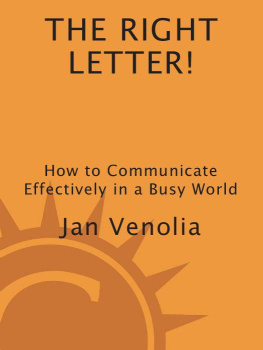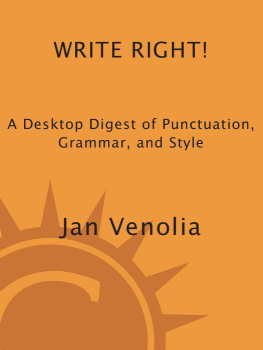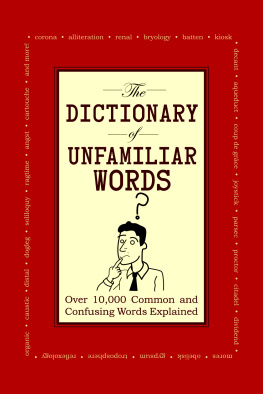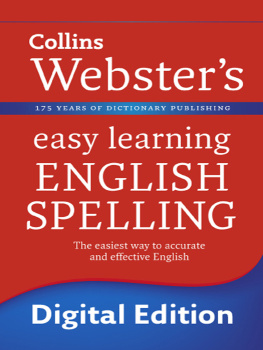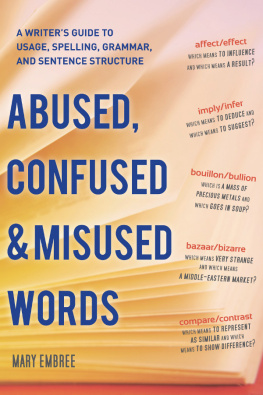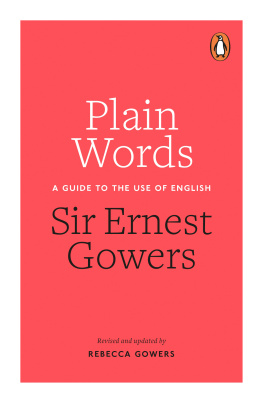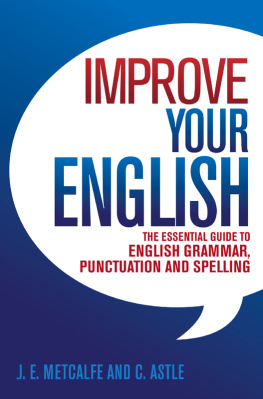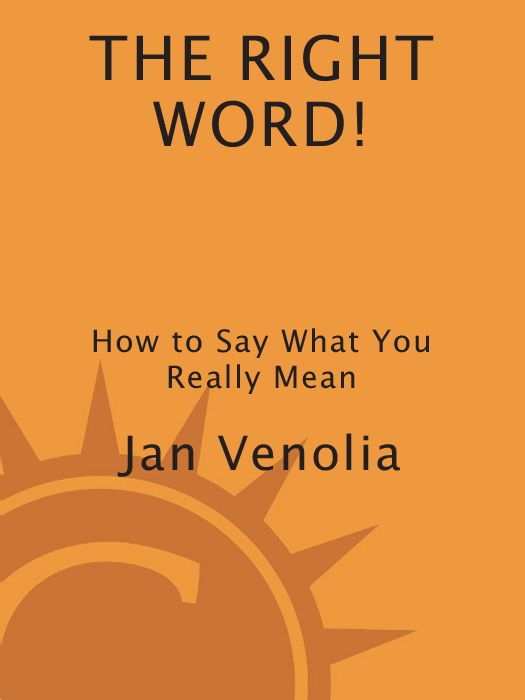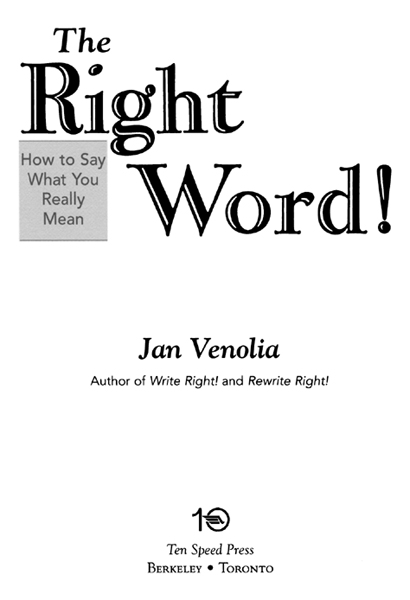Copyright 2003 by Janet G. Venolia
All rights reserved. No part of this book may be reproduced in any form, except brief excerpts for the purpose of review, without written permission of the publisher.
Distributed in Australia by Simon & Schuster Australia, in Canada by Ten Speed Press Canada, in New Zealand by Southern Publishers Group, in South Africa by Real Books, and in the United Kingdom and Europe by Airlift Book Company.
We are talking about tools and carpentry, about words and style, but as we move along, youd do well to remember that we are also talking about magic.
Stephen King
Need magic? Turn the page.
Jan Venolia
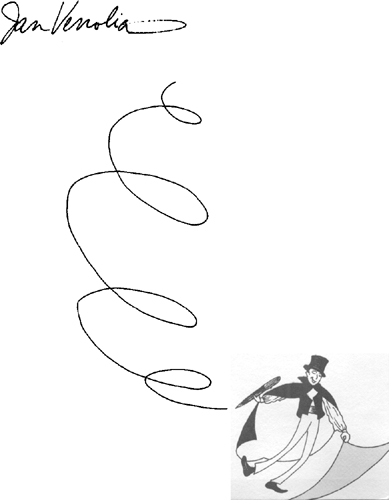
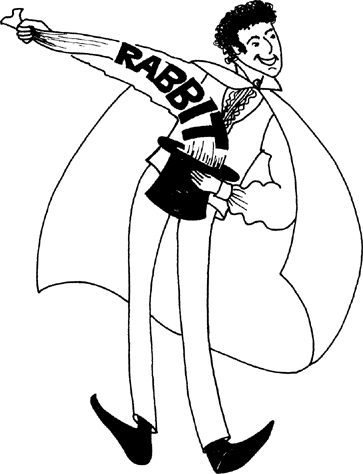
Contents
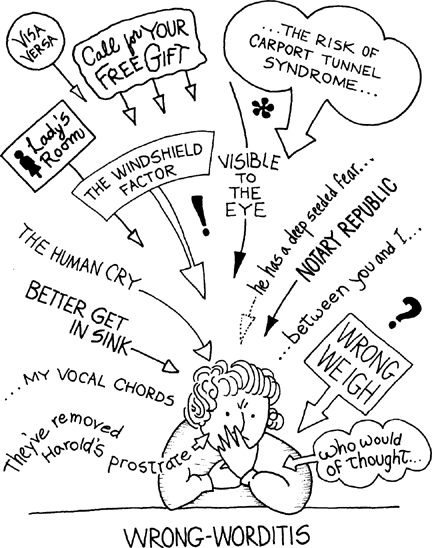
A Few Words about Words
Why this book? Why now? Because were having an epidemic of wrong-worditis. It permeates schools, surfaces in boardrooms, and infiltrates the airwaves. It echoes through the halls of Congress and issues from the White House.
Surely, you may say, using wrong words is far down the list of problems that demand our attention. But look at it this way: Communication is fundamental to human interaction; words are crucial to communication. Whether were talking about jobs, education, community activism, or love affairs, human interaction is whats happening. Its more likely to go well if we use the right words.
Language is everything and everywhere; its what lets us have anything to do with one another.David Foster Wallace
Wrong words get in the way of having anything to do with one another. They mislead and occasionally make us look foolish, as the following sentences show. (I didnt make them up.)
She was naked from the waste down.
The ordinance reigned in adult-oriented establishments.
Youre a real suppository of information.
If youre wondering which of those words are wrong, keep reading. Or maybe you know which are wrong but you wonder why the fuss; you were, after all, able to figure out what was meant. In either case, this book is for you.
The Right Word! explains the difference between waste and waist, reign in and rein in. (I hope you already know the difference between a suppository and a repository.) As for the question, Does it matter? You bet it does. Readers or listeners shouldnt have to struggle to understand what youre saying. Every time you impede comprehension or generate fogginess, you sabotage your reason for communicating. Whats more, unclear communication can make you look sloppy or uneducated; it suggests that you have limitations elsewhere as well.
Whats going on here? How did we arrive at such a place? Much of the time, communication reaches the brain through the ear instead of the eye. When a newscaster or commentator uses a word we dont know, our brains translate the unfamiliar sound into a familiar one. In the process, the right word becomes a near miss; windshield factor and Cadillac converter (i.e., windchill factor and catalytic converter) propagate like rabbits.
But theres more to wrong words than mispronunciation and incorrect definitions. To communicate well, you need to convey what you have in mind without being verbose or stilted; you should know how words are used and be sensitive to their overtones. Take the words exceptional and abnormal. Though both indicate deviation from a norm, try telling a friend that his child is abnormal, and youll quickly learn theres a difference between the two. As the UPI Stylebook states, A burro is an ass. A burrow is a hole in the ground. You are expected to know the difference.
Who decides which words are right and which are wrong? Language, after all, changes. The English we speak is not the English of Shakespeares time. Should we resist such change or embrace it?
According to some linguists, correct usage is whatever language is spoken; change is not only natural but inevitable. These linguists are usually called descriptivists, but Im inclined to call them the whatever school of thought. Its as if correctness is determined by taking a poll.
Those who are more apt to stick with rules (at least the rules that add precision and clarity) are called prescriptivists. The battleground between the two camps is muddy and much trodden.
I guess my own position is already obvious. Even though I believe flexibility is one of the strengths of our language, I see three hazards in the whatever approach.
1. Nothing is communicated.
2. The wrong thing is communicated.
3. Vagueness and uncertainty take over.
The objective of The Right Word! is to provide you with the tools to avoid all three.
Author Patricia OConner (Woe Is I) compares the give-and-take of language to warfare: A word bravely soldiers on for years, until one day it falls face down in the trenches, its original meaning a casualty of misuse. She cites the example of unique, a word that originally meant one of a kind but is gradually changing to mean unusual.
Youll find me in the trenches, working with other lovers of the language to keep unique from being watered down to unusual as its meaning and noo-kyuh-ler from being an acceptable pronunciation of nuclear. When people have a unique experience, I want them to have powerful words to describe it. And if someone has a finger on the nuclear button, I want that person to understand the word well enough to know how to pronounce it (noo-klee-er).
If language is not correct, then what is said is not what is meant; if what is said is not what is meant, then what must be done remains undone; if this remains undone, morals and art will deteriorate; if justice goes astray, the people will stand about in helpless confusion. Hence, there must be no arbitrariness in what is said. This matters above everything.Confucius
No more standing about in helpless confusionThe Right Word! will help you say what you really mean. The first section, O UR L INGUISTIC L EGACY , takes as its premise that the more you know about the English language, the more skilled you will be in using it. To that end, I explore some related subjects:
word roots and formation
searching for synonyms
toxic English
English on the Internet


